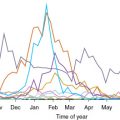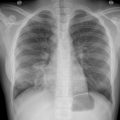Donors of cells or organs are important potential sources of infection in children undergoing hematopoietic stem cell (HSCT) or solid organ transplantation (SOT). In both settings, the donor may be a source of anticipated or unanticipated transmission of pathogens to the recipient. Parents and patients are often appropriately focused on the transplant itself as a lifesaving procedure and therefore do not always appreciate that there may be microbes that can be transmitted with the cells or organ that could affect the recipients as well. It is critical not only for the transplant team to be cognizant of the risk of donor-derived transmissions, but it is also equally important for the team to educate and inform recipients and their families about these potential risks. This chapter reviews the concept of transmission of donor-derived infections and the role of laboratory and historical screening to mitigate this risk. Some of the more common types of infections that can be transmitted are discussed in addition to data describing published experience with donor-derived infections in HSCT and SOT. Although some specific pathogens are covered in general terms, the reader is referred to the chapters on the specific pathogens for a more intensive discussion about the pathogen and preventive strategies to protect the recipient.
Anticipated and unanticipated donor-derived infections
As already noted, some donor-derived infections are considered “anticipated” and screening is now routinely performed on both potential stem cell and organ donors and transplant candidates to assess the risk for and inform the use of strategies to prevent or modify the outcome of donor-derived infections. However, this was not always the case. In the early era of transplantation, the concept that a latent virus, bacteria, or parasite could transfer with a stem cell product or organ was not always obvious. It was only with insightful attention and carefully conducted epidemiologic studies that this mechanism of transmission became clear.
The classic example of a pathogen associated with donor-derived infections that is now considered an anticipated transmission is cytomegalovirus (CMV). Early observations of infectious complications of both HSCT and SOT identified the high frequency and importance of CMV in recipients of these procedures. , Subsequent seroepidemiologic and virologic studies confirmed the role of the donor in both primary and secondary infections caused by this pathogen. For SOT, the greatest risk for CMV transmission and disease occurs when a CMV- naïve (e.g., seronegative) recipient acquires infection from the allograft recovered from a CMV- seropositive donor. This infection occurs at a time when the recipient lacks the ability to develop a robust T-cell response to contain the virus as the result of antirejection immunosuppressive therapies that also inhibit the normal antiviral response. In contrast, for HSCT recipients the donor cells are needed to develop the immunologic response. Hence, although it is well established that a CMV-seropositive donor can infect a naïve recipient, the scenario in which a seropositive recipient receives stem cells from a seronegative donor is also problematic with myeloablative procedures. In this scenario, latent CMV can reactivate in the recipient who will be lacking a mature, educated CMV-specific T-cell population from the donor. The risk of CMV (native or donor-acquired) may be further exacerbated through the use of extrinsic immune suppression to prevent or treat graft-versus-host disease. Further studies highlighted how knowledge of the CMV serologic status of the donor and recipient reliably informed risk stratification for frequency and severity of CMV in both HSCT and SOT recipients.
Despite the ability to identify the presence of CMV in a potential organ donor, the high prevalence of chronic latent infection with this pathogen in the population of potential donors makes avoidance of such donors for SOT impractical. For example, data from United Network for Organ Sharing (UNOS) showed that approximately 60% of all donors have positive test results for CMV, leading to 57% of all CMV-seronegative recipients receiving an organ from a CMV- seropositive donor. Because the condition of patients on the wait list could deteriorate while they await a CMV-seronegative donor and given the availability of effective preventative and therapeutic strategies, most centers use these donors despite recognizing and anticipating the risk of donor-derived transmission and infection. The risk/benefit assessment of using a donor with an anticipated risk versus waiting for a donor without a particular known infection must always be put in the context of overall patient outcome for each individual child on the transplant waiting list.
The model of donor-derived infection from CMV was subsequently extended to a number of other pathogens. Of particular importance in pediatric transplantation is Epstein-Barr virus (EBV). Similar to the situation with CMV, EBV can be transmitted with a donor organ and lead to important complications of EBV disease including posttransplant lymphoproliferative disorder (PTLD). The mismatch state of organ donor-positive and recipient-negative status is again associated with the highest risk for disease in SOT recipients. Because the pediatric population is more often seronegative compared with adult candidates, primary EBV infection often acquired from the donor is a significant concern in the pediatric SOT population. In contrast to the CMV in HSCT recipients, the risk for EBV disease and PTLD after HSCT primarily depends on the EBV status of the donor. This is because latent EBV infection within the recipient is often eradicated as part of the ablation protocols used to prepare the HSCT recipient for HSCT (Thomas Gross MD, PhD, personal communication, December 21, 2018). Although the donor would be expected to have adoptive immunity against this virus, EBV derived from the donor is a cause of early disease after HSCT before donor-derived EBV-specific cytotoxic lymphocytes can establish control over the virus to prevent illness, including PTLD. Similar to the scenario with CMV, protocols for monitoring recipients at risk for acquiring EBV in both populations have helped to modify EBV infection outcomes and even prevent disease in children undergoing these procedures. Accordingly, most transplant centers have protocols in place to test CMV and EBV serologic status in HSCT and SOT recipients and donors.
With confirmation that the donor can be the source of infection, ongoing observations have identified countless other pathogens that have been associated with donor-derived infections in recipients of HSCT and SOT procedures. This has included pathogens that were not known to be present in the donor and were subsequently shown to be associated with donor-derived infection on retrospective evaluation. Such events exemplify the term “unanticipated” donor-derived infection. These events are relatively rare considering the large number of transplants that occur but are potentially devastating to one or more recipients (in the case of SOT) when they happen. In general, recipients of HSCT or living organ donation are at lower risk for unanticipated donor-derived infections compared with recipients of deceased organs as the transplants are set up in advance so that time is available for appropriate screening. In addition, living donors can be educated about avoiding infections, and if they are sick on the day of planned donation, donation can be delayed until a later date.
Unanticipated donor-derived infections have been attributed to all classes of pathogens, including bacteria (e.g., methicillin-resistant Staphylococcus aureus ), viruses (e.g., human immunodeficiency virus [HIV], rabies), fungi (e.g., coccidiomycoses), and parasites (e.g., Strongyloides infection). In contrast to CMV, for which a deliberate decision is made to use an organ despite a predictable risk of transmission to and infection in the recipient, these pathogens represent examples of unexpected transmissions because screening (see later text) was not routinely performed in donors, results came back only after transplant had occurred, or appropriate screening tests were not available. In some circumstances, routine screening had not been previously performed but repeated cases of donor-derived transmission led to incorporation of screening for such pathogens as part of standard of care practice, either locally, regionally, or on a national or international basis. For example, some centers now routinely screen donors from geographic areas that are endemic for Strongyloides ; if the donor is seropositive, intervention with prophylactic ivermectin can prevent disease transmission. In a similar manner, knowledge of donors with bacterial infections such as Streptococcus pneumoniae bacteremia or meningitis can be safely used provided the donor and recipient receive appropriate treatment. Accordingly, most centers would use such an organ. Multidrug-resistant bacteria can be somewhat problematic if susceptibility testing is not available and can cause serious recipient disease. Many centers would refuse to use a graft from a such a donor, particularly with a carbapenem-resistant bacterium. However, an Italian transplant group demonstrated that appropriate treatment early after transplant could allow for safe and successful use of organs from infected donors with resistant bacterial pathogens.
Regulatory oversite of donor screening and reporting of donor-derived infections
With the recognition of the importance of donor-derived infections, government agencies charged with oversite of HSCT and SOT have worked to address and mitigate the risk of these infectious complications. The World Health Organization Guiding Principles on human cell, tissue and organ transplantation encourage countries to have national health oversight of transplant programs to ensure safety of donors and recipients. In the United States, the Health Resources and Services Administration (HRSA), (a branch of the Department of Health and Human Services, oversees the conduct and safety of bone marrow, cord blood, and organ transplantation through different organizations. The National Marrow Donor Program (NMDP; now known as “Be the Match”) is contracted by HRSA to oversee the national HSCT program, including donor/recipient adverse events that encompass donor-derived infections. In addition, HRSA has separate contracts with 13 cord banks in the United States through the National Cord Blood Inventory (NCBI) to collect and store cord blood units. UNOS is contracted by HRSA to manage the Organ Procurement and Transplantation Network (OPTN) which in turn is responsible for safety oversight including donor-derived infections in SOT recipients. Both programs have developed policy-based requirements for the screening of donors and mandated reporting of suspected donor-derived infection transmission events in recipients in an effort to understand and minimize the risk of these infectious complication. In addition to the screening and reporting requirements for HSCT recipients, the NMDP Donor Patient Safety Monitoring Advisory Group (DPSM) investigates infectious disease transmissions as well as all serious recipient infections occurring in these patients. For SOT, the ad hoc OPTN/UNOS Disease Transmission Advisory Committee (DTAC) reviews the mandated reports of potential disease transmission events that are submitted from either the transplant center or the organ procurement organization. Both groups work to review their experience in an effort to improve patient outcomes through enhanced education and relevant policy modifications.
Current policy requires donor and recipient laboratory (serologic, molecular diagnostic, and microbiologic) screening for both HSCT and SOT ( Table 5.1 ). Included pathogens for both HSCT and SOT are those with strong evidence supporting transmission potential or those associated with a high risk for severe disease. Examples of such pathogens include HIV, hepatitis B virus (HBV), hepatitis C virus (HCV), syphilis, and CMV. Although EBV testing is required for an evaluation of a potential deceased organ donor, it is not currently required for potential stem cell donors or for living organ donors. This may be due to the fact that the majority of adults are EBV seropositive, whereas only about 50% of the adults in the United States are seropositive for CMV. Although donor screening protocols for many of the pathogens have been in place for decades, others have been more recently added based on more recently appreciated risks. For example, Toxoplasma gondii serologic testing had been part of routine screening for cardiac organ transplantation for years but was recently added in the United States for all deceased organ transplant donors after a review of OPTN/UNOS experience identified a higher-than-expected transmission risk to recipients of non-cardiac organs. In addition, some screening tests may be required for HSCT but not SOT, or vice versa. Finally, OPTN/UNOS policy also includes differing requirements for the evaluation of a living versus deceased donor, including consideration of geographic risk factors when individualizing the evaluation of a potential living organ donor. , In this circumstance, policy requires each center to have a written plan for consideration of screening for pathogens with variable geographic risks (e.g., trypanosomiasis and West Nile virus). Similarly, because screening for infection caused by Mycobacterium tuberculosis cannot reliably be performed on potential deceased donors, it is required only for screening of potential living organ donors .
| Organism or Site Screened | Methodology | Deceased Organs | Living Donors | Living HSCT Allogeneic Donors a Cord Blood Testing Performed on Maternal Sample b | Comments |
|---|---|---|---|---|---|
| HIV 1, 2 | Antibody or Ag/Ab combination test | All In addition, PHS IRD must also have NAT HIV test or HIV Ag/Ab combination | All c | All Can be NAT | Positive test result is contraindication to use with HSCT recipients. Organs can be used only through HOPE Act variance. |
| HTLV I, II | Ab | Not required | All c | All | |
| Hepatitis C virus | Both Ab and NAT | All Special consent process required if HCV positive | All c | All | Positive test result is contraindication to use in HSCT with exception of documented urgent need. |
| Hepatitis B virus | HBsAg, HBcAb | All Special consent process required if HBsAg or HB NAT positive | All c | All and should include NAT testing | Positive test result is contraindication to use in HSCT with exception of documented urgent need. |
| Cytomegalovirus | Ab | All | All | All | |
| Epstein-Barr virus | Ab | All | All | Not required | |
| Toxoplasma gondii | IgG Ab | All | Not required | Not required | |
| Syphilis screen | Screening or diagnostic test | All | All c | All | |
| Tuberculosis | Intradermal or interferon-gamma release assay | Not required | If suspected of having an increased risk for tuberculosis | Not required | Positive test results from any donor need to be reported. |
| Respiratory culture (bacterial and yeast) | Sputum Gram stain and results of bronchoscopy | Required for potential donors of lungs or head and neck VCA only | Not required | Not required | |
| Urine culture (bacterial or Candida species) | Urinalysis or microscopy Urine culture if indicated | Positive culture results reported to transplant programs receiving kidneys or genitourinary VCAs | Positive culture results reported to transplant programs receiving kidneys or genitourinary VCAs | Not required | |
| Bone marrow culture for bacteria or fungi | Not required | Not required | Not required but many centers obtain, particularly if cells manipulated before transplantation | ||
| Other | Positive culture results from: Ascites, blood, cerebral spinal fluid, deep wound, genital, pericardial, pleural fluid | Positive culture results need to be reported. | |||
| Other | Positive results from other serologic, NAT, or antigen testing indicating presence of parasites, mycobacterial smears or cultures, virus, or fungi | West Nile virus testing of living donors required | Positive results need to be reported. |
Stay updated, free articles. Join our Telegram channel

Full access? Get Clinical Tree






